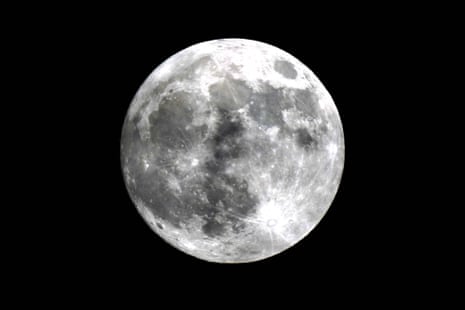This autumn, for a limited time, Earth will be getting a second moon.
According to a study published this week, an asteroid roughly the length of a city bus will be captured by Earth’s gravitational pull and orbit our planet for about two months, becoming a “mini moon”.
It will spend time with Earth from 29 September until 25 November before returning to its home, an asteroid belt revolving around the sun.
“The object that is going to pay us a visit belongs to the Arjuna asteroid belt, a secondary asteroid belt made of space rocks that follow orbits very similar to that of Earth,” Carlos de la Fuente Marcos, a professor at Universidad Complutense de Madrid and the lead author of the research, told Space.com.
He explained that some of the asteroids in the Arjuna belt can approach relatively close to Earth, about 2.8m miles (4.5m km) away.
If they’re also going relatively slowly for asteroids – at velocities of around 2,200mph (3,540km/h) – then their paths become more strongly affected by the Earth’s gravity than usual.
“Under these conditions … the object may become a temporary moon of Earth,” he said, adding it would happen to the asteroid in question starting next week and last about two months.
He added that it would not follow a full orbit around the Earth.
The asteroid was discovered on 7 August by the Asteroid Terrestrial-Impact Last Alert System (Atlas), a Nasa-funded program.
It measures about 10 meters long, which is tiny compared with the Earth’s moon, with has a diameter of about 3,474km.
The object will be “too small and dim for typical amateur telescopes and binoculars”, Marcos added. “However, the object is well within the brightness range of typical telescopes used by professional astronomers.”
The scientists added that they believe the asteroid mini moon will return to Earth’s orbit again in 2055.
This is not the first mini moon the Earth has had. The researchers wrote in their paper that two mini moon events occurred in 1981 and in 2022.
